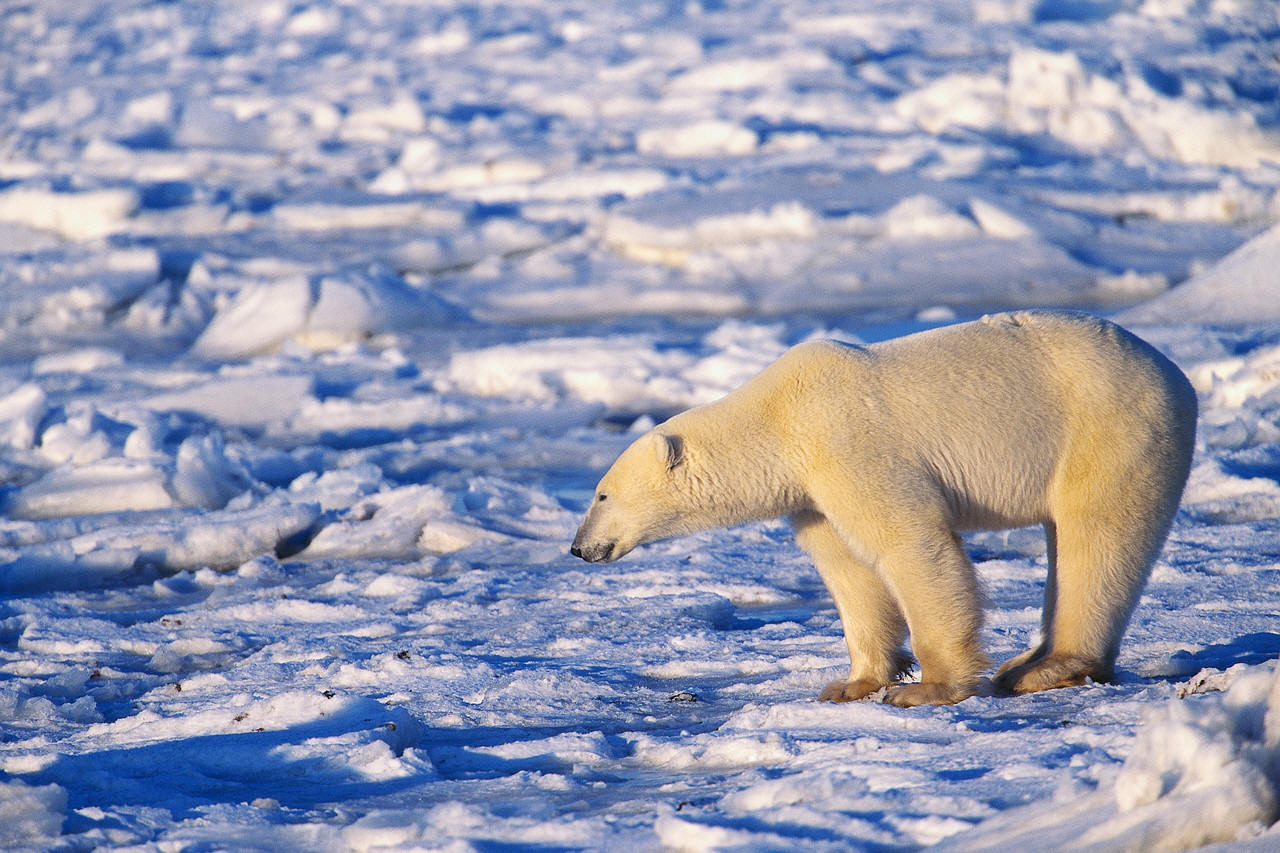The harsh conditions of the high altitudes, force polar bears to adapt to the their environment. Many of the adaptations seen in polar bears help to regulate body temperature, make hunting easier, and increase the efficiency of movement both in and out of the water. The polar bear's thick curved claws are important during times of feeding. They are frequently used to tear away the flesh of preyed upon organisms and to navigate through the carcasses of dead animals. The polar bear's distinct swimming abilities probably source from their joined toes (webbed feet). Their toes are joined by swimming membranes which allow for greater success in the water (Macdonald, 500). Another important characteristic of the polar bear is its water repellant fur coat (Kurt, 500). This feature allows for more efficient and less exhausting swimming. Although a seal can easily out swim a polar bear, seals are easily tricked by polar bears because their depth perception is rather poor. For example, Adrian Forsyth a researcher from Mammals of North America explains, "One polar bear was seen pretending to be an ice chuck while he stalked an adult ringed seal in open water. First observed about 230 feet from a seal resting on ice, the bear began swimming strongly toward it. Whenever the seal went underwater, the bear immediately stopped swimming and floated motionless; when the seal surfaced, the bear resumed its swim, gradually closing the distance between them. Finally, the seal surfaced right beside the bear, apparently mistaking it for floating ice. The bear killed it with a sudden lunge and a single bite." The polar bear's heavy coat is a very important adaptation used in body temperature regulation. The color of polar bear's fur changes annually; during the winter, after the summer molt, polar bear's fur appears pure white, whereas, during the summer its fur seems to have a yellow tint to it. The molting process allows polar bears to shed their winter coat and aids in keeping them cool during the warmer summer months. The polar bear's pure white coat creates a camouflage effect and serves as an important mechanism during hunting. In addition, the polar bear's fur coat acts as a heater or solar collector as the hollow hairs trap in warm insulating air from the sun (Forsyth, 190). Interestingly, the skin underneath the polar bear's coat is black (Geist and Kleiman, 304). Because dark colors absorb heat, this adaptation provides additional warmth when the sun is shinning. Polar bears are able to obtain extra warmth from their diet; the high fat content that polar bears consume during meal time serves as insulation during the cold winter months. Diets high in fat are an essential part of polar bears survival. Without the extra fat from their diet, they would not be able to fast and function without food for long periods of time. The fatty meat that polar bears consume gives them extra food when the food supply is low or weather conditions are harsh. With the exception of the polar bear's black nose and foot pads, it is entirely covered with fur. Being fully clothed provides the polar bear with additional warmth during the winter. As mentioned before, polar bears have mammary glands which produce milk for their newborn cubs. The milk secreted by the mammary glands contains nearly 31 percent fat (Macdonald, 92). The high fat concentrated milk helps regulate the baby cub's body temperature and ensures rapid growth and development. In addition to the adaptations used in temperature regulation, the polar bear also has a keen sense of smell and very good eyes sight; both very important features when hunting in the arctic habitat. Often times, polar bears use their vivid sense of smell to locate their next victim. The polar bear appears to be slightly bowl-legged and pigeon-toed. These adaptations allow the polar bear to travel at high speeds and stop abruptly without slipping on the slippery ice. The soles of the feet are haired and give the polar bear more traction when running and making sudden movements on the ice.
|


